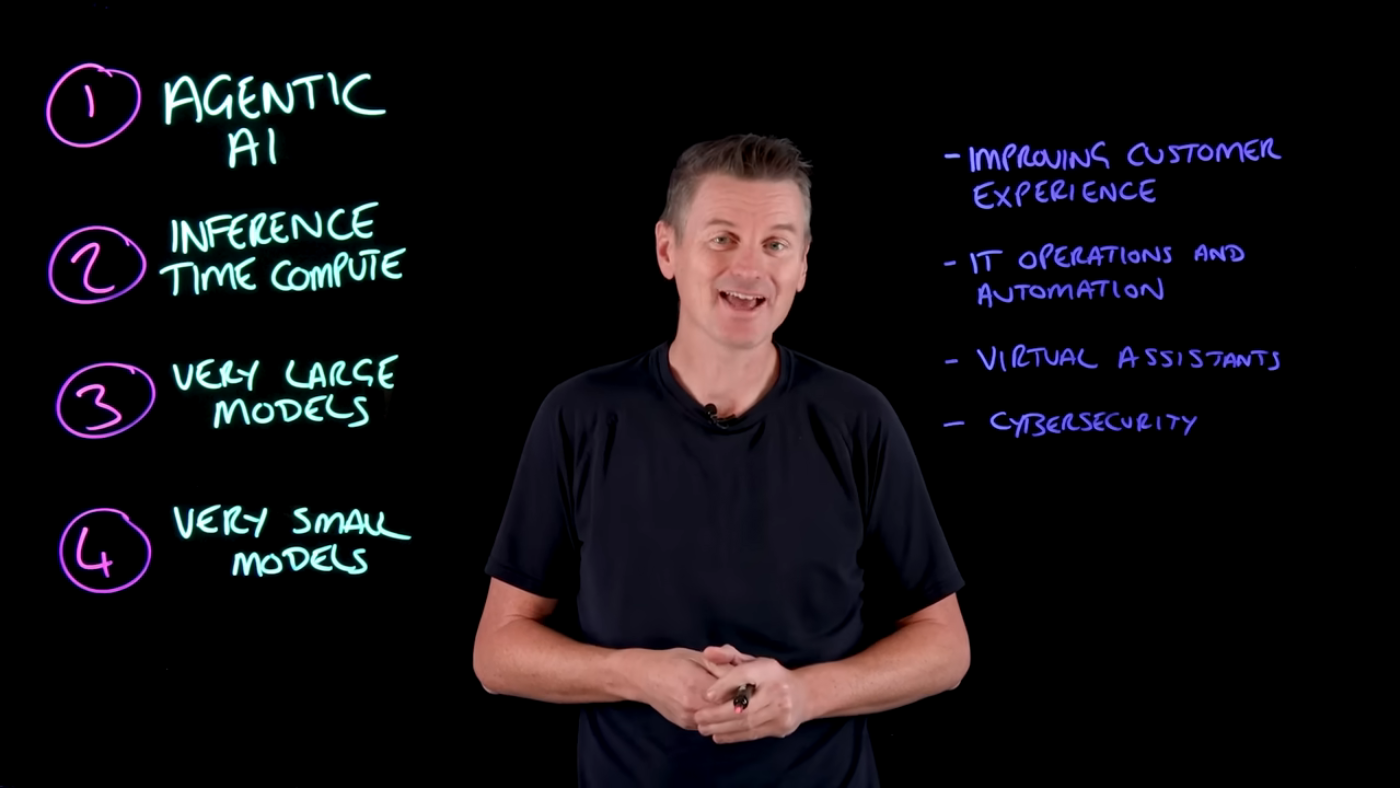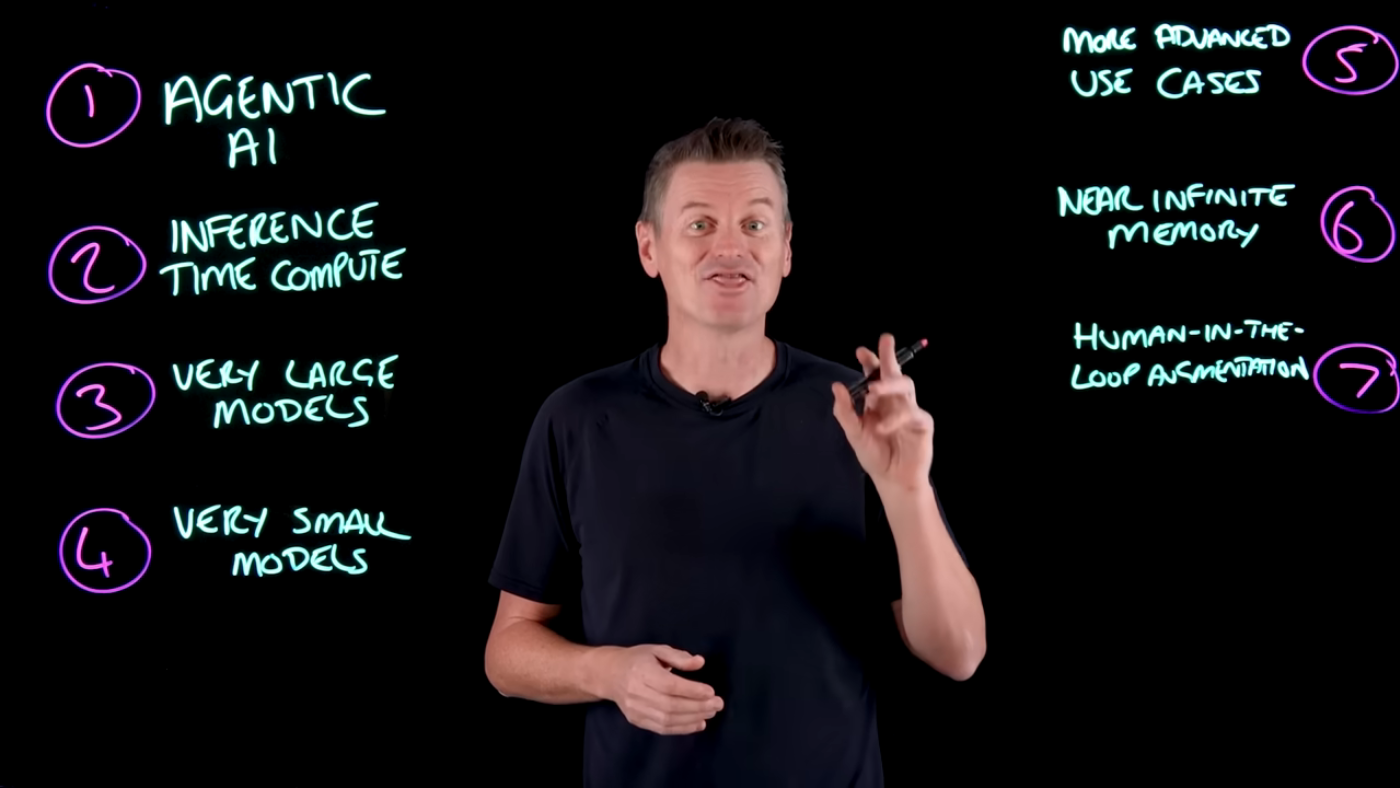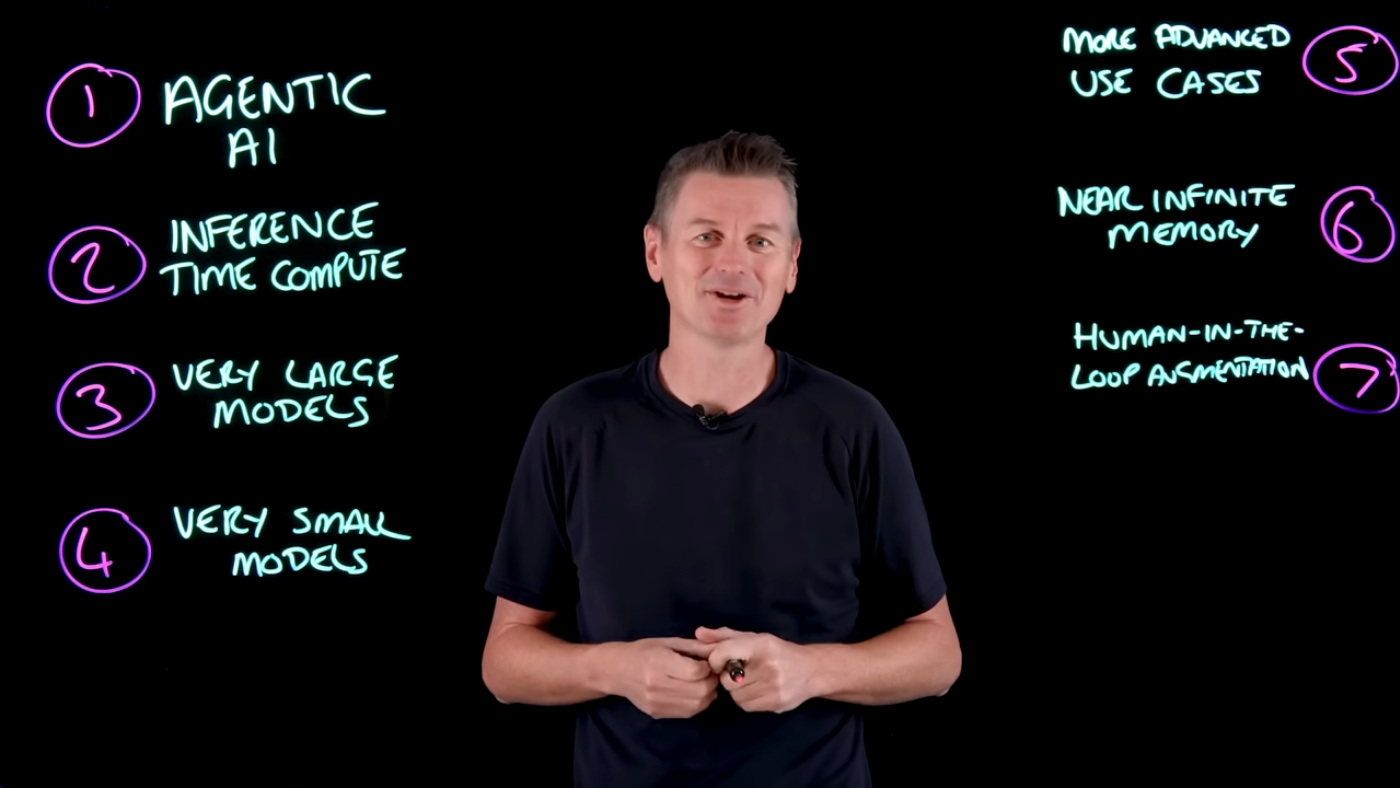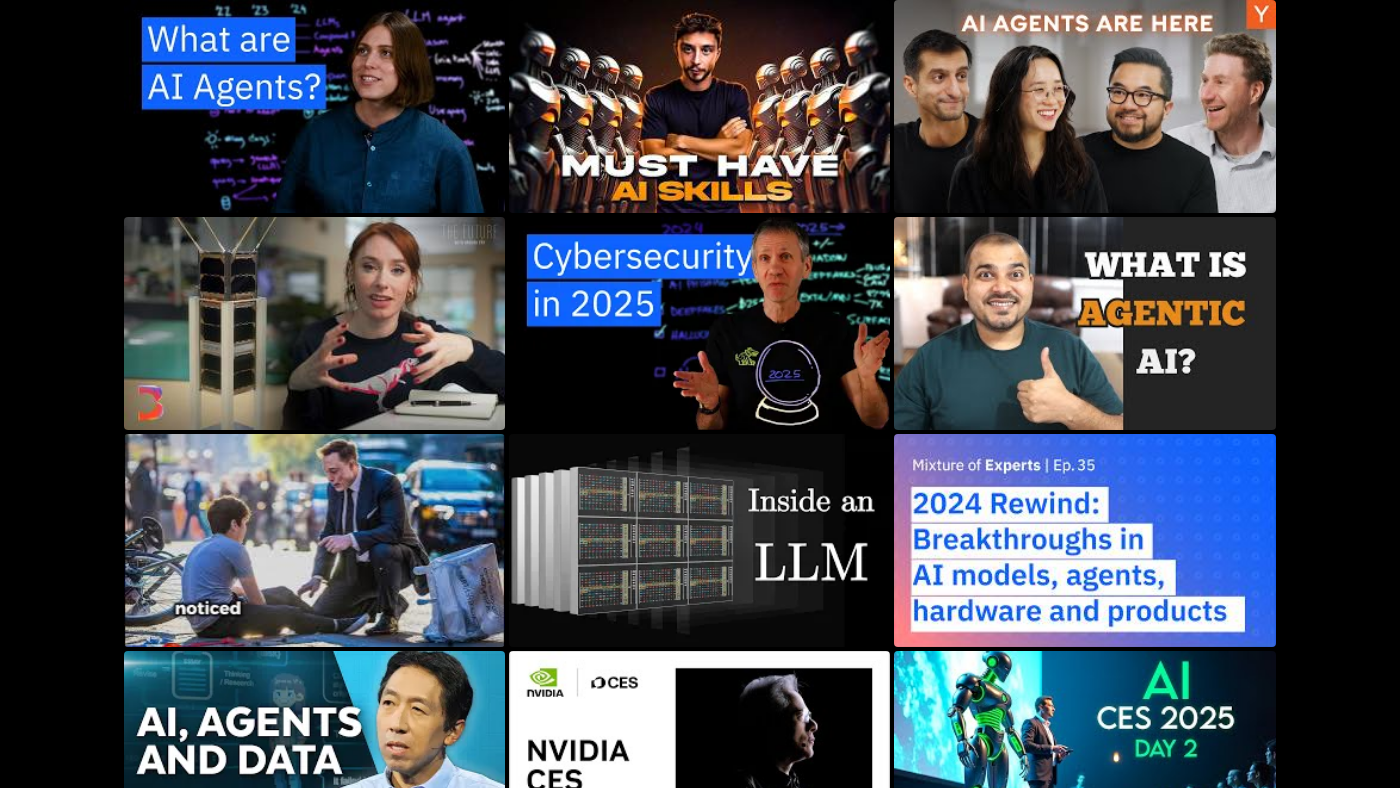AI Trends in 2025: What to Expect
The world of AI is changing rapidly, and it's essential to stay informed about the latest trends and developments. In this article, we'll explore the eight important AI trends in 2025, as predicted by Martin Keen, Master Inventor.
Introduction to AI Trends in 2025
 Introduction to the importance of AI trends in 2025
The article begins with an introduction to the importance of AI trends in 2025. Martin Keen shares his educated guesses on the most important trends in AI for the upcoming year. He mentions that he has experience in predicting AI trends, having done so for 2024, and is now sharing his insights for 2025.
Introduction to the importance of AI trends in 2025
The article begins with an introduction to the importance of AI trends in 2025. Martin Keen shares his educated guesses on the most important trends in AI for the upcoming year. He mentions that he has experience in predicting AI trends, having done so for 2024, and is now sharing his insights for 2025.
Trend 1: Agenetic AI
 Understanding Agenetic AI and its importance
The first trend discussed is Agenetic AI, which refers to intelligent systems that can reason, plan, and take action. These systems can break down complex problems into multi-step plans and interact with tools and databases to achieve goals. Martin Keen mentions that while today's models struggle with consistent logical reasoning, better models will be needed in 2025 to improve the utility of AI agents.
Understanding Agenetic AI and its importance
The first trend discussed is Agenetic AI, which refers to intelligent systems that can reason, plan, and take action. These systems can break down complex problems into multi-step plans and interact with tools and databases to achieve goals. Martin Keen mentions that while today's models struggle with consistent logical reasoning, better models will be needed in 2025 to improve the utility of AI agents.
Trend 2: Inference Time Compute
 Understanding Inference Time Compute and its significance
The second trend is inference time compute, which refers to the ability of AI models to spend time "thinking" before giving an answer. This thinking time is variable and based on the amount of reasoning required. Martin Keen explains that inference time compute models are interesting because the inference reasoning can be tuned and improved without having to train and tweak the underlying model.
Understanding Inference Time Compute and its significance
The second trend is inference time compute, which refers to the ability of AI models to spend time "thinking" before giving an answer. This thinking time is variable and based on the amount of reasoning required. Martin Keen explains that inference time compute models are interesting because the inference reasoning can be tuned and improved without having to train and tweak the underlying model.
Trend 3: Very Large Models
 Understanding Very Large Models and their potential
The third trend is very large models, which consist of many parameters refined over the training process. Martin Keen mentions that the next generation of models is expected to be many times larger than the current ones, with some models potentially having upwards of 50 trillion parameters.
Understanding Very Large Models and their potential
The third trend is very large models, which consist of many parameters refined over the training process. Martin Keen mentions that the next generation of models is expected to be many times larger than the current ones, with some models potentially having upwards of 50 trillion parameters.
Trend 4: Very Small Models
 Understanding Very Small Models and their advantages
The fourth trend is very small models, which are only a few billion parameters in size. These models don't require huge data centers loaded with stacks of GPUs to operate and can run on laptops or even phones. Martin Keen mentions that he has a 2 billion parameter model running on his laptop, which doesn't require significant computational power.
Understanding Very Small Models and their advantages
The fourth trend is very small models, which are only a few billion parameters in size. These models don't require huge data centers loaded with stacks of GPUs to operate and can run on laptops or even phones. Martin Keen mentions that he has a 2 billion parameter model running on his laptop, which doesn't require significant computational power.
Trend 5: Advanced Use Cases
 Understanding Advanced Use Cases and their applications
The fifth trend is advanced use cases, which include customer service bots that can solve complex problems, AI systems that can proactively optimize entire IT networks, and security tools that can adapt to new threats in real-time. Martin Keen mentions that these use cases will become more prevalent in 2025.
Understanding Advanced Use Cases and their applications
The fifth trend is advanced use cases, which include customer service bots that can solve complex problems, AI systems that can proactively optimize entire IT networks, and security tools that can adapt to new threats in real-time. Martin Keen mentions that these use cases will become more prevalent in 2025.
Trend 6: Near Infinite Memory
 Understanding Near Infinite Memory and its implications
The sixth trend is near infinite memory, which refers to the ability of AI models to recall vast amounts of information. Martin Keen mentions that we are getting close to an era where customer service chatbots can recall every conversation they've had with us.
Understanding Near Infinite Memory and its implications
The sixth trend is near infinite memory, which refers to the ability of AI models to recall vast amounts of information. Martin Keen mentions that we are getting close to an era where customer service chatbots can recall every conversation they've had with us.
Trend 7: Human in the Loop Augmentation
 Understanding Human in the Loop Augmentation and its potential
The seventh trend is human in the loop augmentation, which refers to the ability of AI systems to work together with humans to achieve better results. Martin Keen mentions that this trend is important because it allows professionals to augment AI tools into their workflow without needing to be experts in AI.
Understanding Human in the Loop Augmentation and its potential
The seventh trend is human in the loop augmentation, which refers to the ability of AI systems to work together with humans to achieve better results. Martin Keen mentions that this trend is important because it allows professionals to augment AI tools into their workflow without needing to be experts in AI.
Trend 8: Audience Choice
The final trend is left to the audience, with Martin Keen asking viewers to share their thoughts on what they think will be an important AI trend in 2025.
Conclusion
In conclusion, the eight AI trends in 2025, as predicted by Martin Keen, are Agenetic AI, inference time compute, very large models, very small models, advanced use cases, near infinite memory, human in the loop augmentation, and audience choice. These trends have the potential to shape the future of AI and its applications in various industries. As the field of AI continues to evolve, it's essential to stay informed about the latest developments and trends to remain competitive and adapt to the changing landscape.
